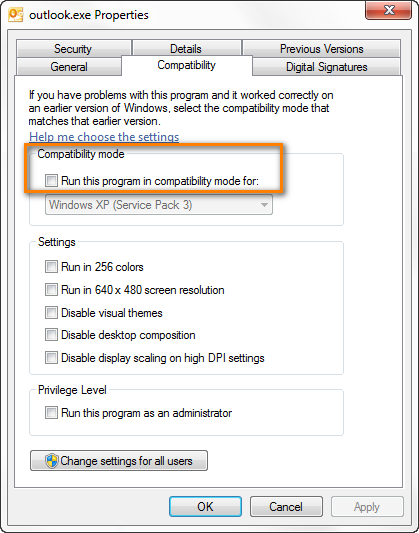-->
Introduction

We have also the same issues as @MarcoEver since we updated to 2019 CU8. These errors appear in Exchange Server Application log when users connect to the server with their Outlook desktop apps.ASP.NET 4.0.30319.0' Evend ID 1309'MSExchange Front End HTTP Proxy' Event ID 1003'MSExchange Common' Event. Windows 10 SAC, Windows 10 LTSB 2016, Windows 10 LTSB 2015, Windows 8.1, Windows 8, Windows 7 Service Pack 1., Windows Server 2016, Windows Server 2012 R2, Windows Server 2012, or Windows Server 2008 R2. Please note Office 2016 will not be supported on Windows 10 LTSC 2019.

This article describes how to troubleshoot the following kinds of issues in Microsoft Outlook when it's used together with Office 365:
- Outlook stops responding (hangs).
- Outlook crashes even though you aren't actively using it.
- Outlook crashes when you start it.
Windows Office 2019 Free
Procedure

To help troubleshoot Outlook issues in an Office 365 environment, follow these steps.
Step 1: Investigate possible issues caused by add-ins
Exit Outlook.
Open a Run dialog box. To do this, use one of the following procedures, as appropriate to your version of Windows:
- If you're running Windows 10, Windows 8.1, or Windows 8, press the Windows logo key+R.
- If you're running Windows 7, click Start, type Run in the Search box, and then click Run.
Type Outlook /safe, and then click OK.
If the issue is fixed, click Options on the File menu, and then click Add-Ins.
Select COM Add-ins, and then click Go.
Click to clear all the check boxes in the list, and then click OK.
Restart Outlook. If the issue doesn't occur, start adding the add-ins one at a time until the issue occurs.
Step 2: Repair Office
- Open Control Panel, and then click Uninstall a program.
- In the list of installed programs, right-click the entry for your Office installation, and then click Change, and then click Online Repair.
Step 3: Run Outlook Diagnostics
Run the Outlook won't start automated diagnostics to fix the issues.
Note
Click Run when you're prompted by your browser.
If the tool doesn't resolve the issue, go to Windows or Look to start Microsoft Support and Recovery Assistant for Office 365 (SaRA).
On the first screen, select Outlook, and then select Next.
Select any of the following options, as appropriate, and then select Next:
- Outlook keeps hanging or freezing
- Outlook keeps crashing with a message 'Microsoft Outlook has stopped working'.
SaRA runs some diagnostic checks, and returns possible solutions for you to use to try to fix Outlook connectivity issues.
Step 4: Create a new Outlook profile
Note
If you ran SaRA in Step 3, and you created a new profile, you can skip all of Step 4.
Open Control Panel, and then click Mail.
Click Show Profiles.
Select the profile that you want to remove, and then click Remove.
Important
Removing the profile also removes associated data files. If you're not sure whether the data files are backed up or stored on a server, do not remove the profile. Instead, go to step 4.
Click Add.
In the Profile Name box, type a name for the new profile.
Specify the user name, the primary SMTP address, and the password. Then, click Next.
You may receive the following message:
Allow this website to configure alias@domain server settings? In this message, click to select the Don't ask me about this website again check box, and then click Allow.
When you're prompted, enter your logon credentials, and then click OK.
When Setup is finished, click Finish.
Step 5: Run SaRA Advanced Diagnostics before you contact Support
This step creates detailed information about your Outlook configuration and provides solutions for any known issues that are detected. It also gives you the option to upload your results to Microsoft so that a Support engineer can review them before you make a Support call.

- Click Outlook Advanced Diagnostics.
- Click Run when you are prompted by your browser.
More information
For more info about command-line switches that are used together with Outlook, go to Command-line switches for Microsoft Office products.
Still need help? Go to Microsoft Community.
Microsoft Office 2013 – the next update of excellent Office suite, which not only has a new fresh design that simplifies access to all major instruments, thus simplifying the conservation, exchange with files and access the main tools expandable palette, but also expands the possibilities online. True, this leads to a new regular updates, and this requires a reliable non-crashed activation of KMSPico.
What is KMSPico for Office 2013?
KMSpico – is a unique fully automatic activator and does not require any additional configuration, moreover, it is able to automatically update the activation. To activate, simply run KMSpico and press the big red button.
Another good activator for Office 2013 can be activator Re-Loader.
Capabilities:
- Fully automatic activation.
- The activation of all editions of Microsoft Office (Office 2010, Office 2013, Office 2016).
- MAC-keys are updated every day.
- KMS-server are updated every day.
- Viewing the current key.
- Cleaning activation stories.
- Backup activation.
Instruction for use:
- At the time of activation disableWindows Defender and antivirus (Click here to get info about how to turn off Windows Defender, if you need it).
- Download the file, open it. Run executable file and you will download the archive with working Activator in it.
- Unzip the file (Password for archive — windows).
- Run as an administrator the file KMSELDI.exe.
- In tab Main click “start” and wait until the activator finish (click “install” when it asks for).
- Reload computer.
- Use with joy.